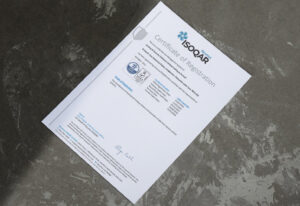The Illusion of 5-Pin Cylinders
At first glance, five pins in a lock cylinder may sound impressive. With a bit of clever marketing, it’s easy to see why buyers believe they’re getting solid security. In the past, this may have been true. But things have changed significantly in recent years. It’s time for those still promoting 5-pin cylinders to acknowledge the truth – this outdated, inferior product has no place in modern security.
The True Cost of Cheap Cylinders
5-pin cylinders are often sold on price, but like many so-called bargains, the true cost can be far greater. If you replace a lock cylinder in your home, and your insurance policy requires specific standards, you could unintentionally void your cover. This is an easy mistake to make – after all, who reads the fine print on insurance documents?
Insurers’ Standards and Vulnerabilities
Insurers, of course, set their premiums to reflect their risk. In the case of lock cylinders, they often specify BS3621. Under this standard, cylinders must be 6-pin models to achieve the minimum specification. Insurers are well aware that the 5-pin versions are more vulnerable to attack.
The Impact of Approved Document Q
In 2015, a new requirement, Approved Document Q, dealing with the security of dwellings, was added to English Building Regulations. For the first time, new dwellings were required to be able to resist unauthorised entry by casual or opportunist burglars. Manufacturers rushed to ensure their products reached the required standards. PAS24 is often-quoted as the standard for door security, and let’s be absolutely clear: to meet PAS24, a 6-pin cylinder is required as a minimum necessity.
Limitations in Complex Systems
Beyond the domestic market, the limitations of 5-pin cylinders become clear. Their design offers fewer combinations than a 6-pin cylinder, making them unsuitable for complex masterkey systems, such as those used in hospitals and schools. Specifiers often find themselves facing difficulties when trying to meet their client’s keying requirements. What was initially specified may not work, leading to the need to switch to a 6-pin solution. While this adds to the cost, it’s often the only option to achieve the desired keying complexity.
Security Features and Compliance
With fewer chambers in a 5-pin cylinder, the options for enhanced security features are limited. For example, construction keying isn’t usually a possibility. Also – with implications that most consumers will understand – fewer chambers means no anti-bump features. If you don’t have anti-bump capability the cylinder cannot be considered for use on entrance doors to dwellings – again as part of Approved Document Q. Furthermore, without anti-bump it’s not possible to achieve the much-publicised 3-star security rating. The result – properties are more vulnerable to attack.
The Future of Lock Security
The good news is that, overall, both in the domestic and commercial markets, standards of security are increasing. Lock cylinders are better designed and built, more door manufacturers are choosing 3-star products and there is an increased understanding that for total security, key systems need patent protection.
The Persistent Problem of 5-Pin Cylinders
The bad news is that some vendors continue to push 5-pin cylinders onto unsuspecting buyers. Surely, it is time this stopped.
Get in Touch
If you’re ready to upgrade your security with modern, patent-protected systems, don’t settle for inferior 5-pin cylinders. Contact Access2 today to learn more about our advanced lock solutions.
Call us at +44 (0)191 215 0530 or email sales@access2.com. Let us help you secure what matters most.


